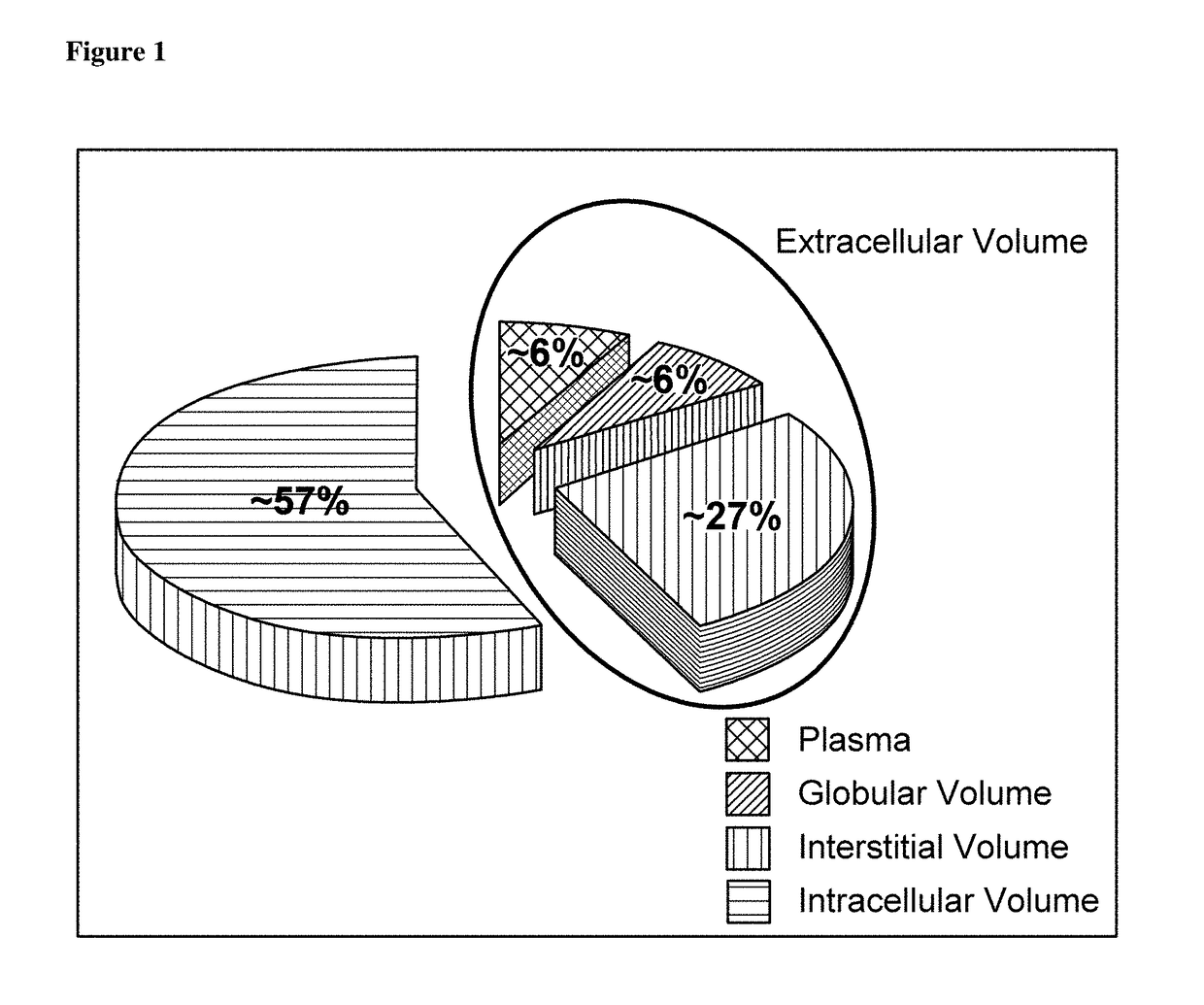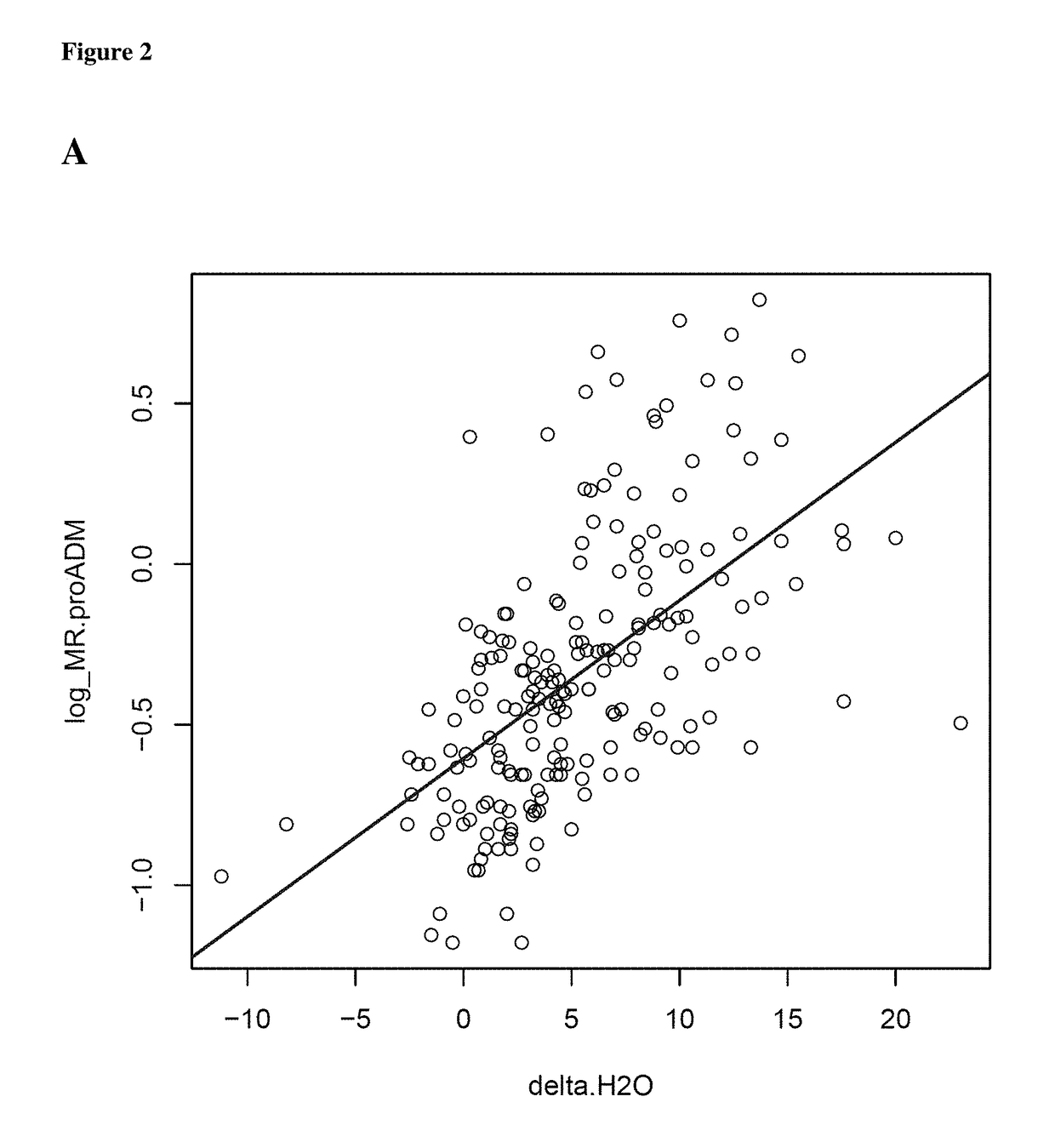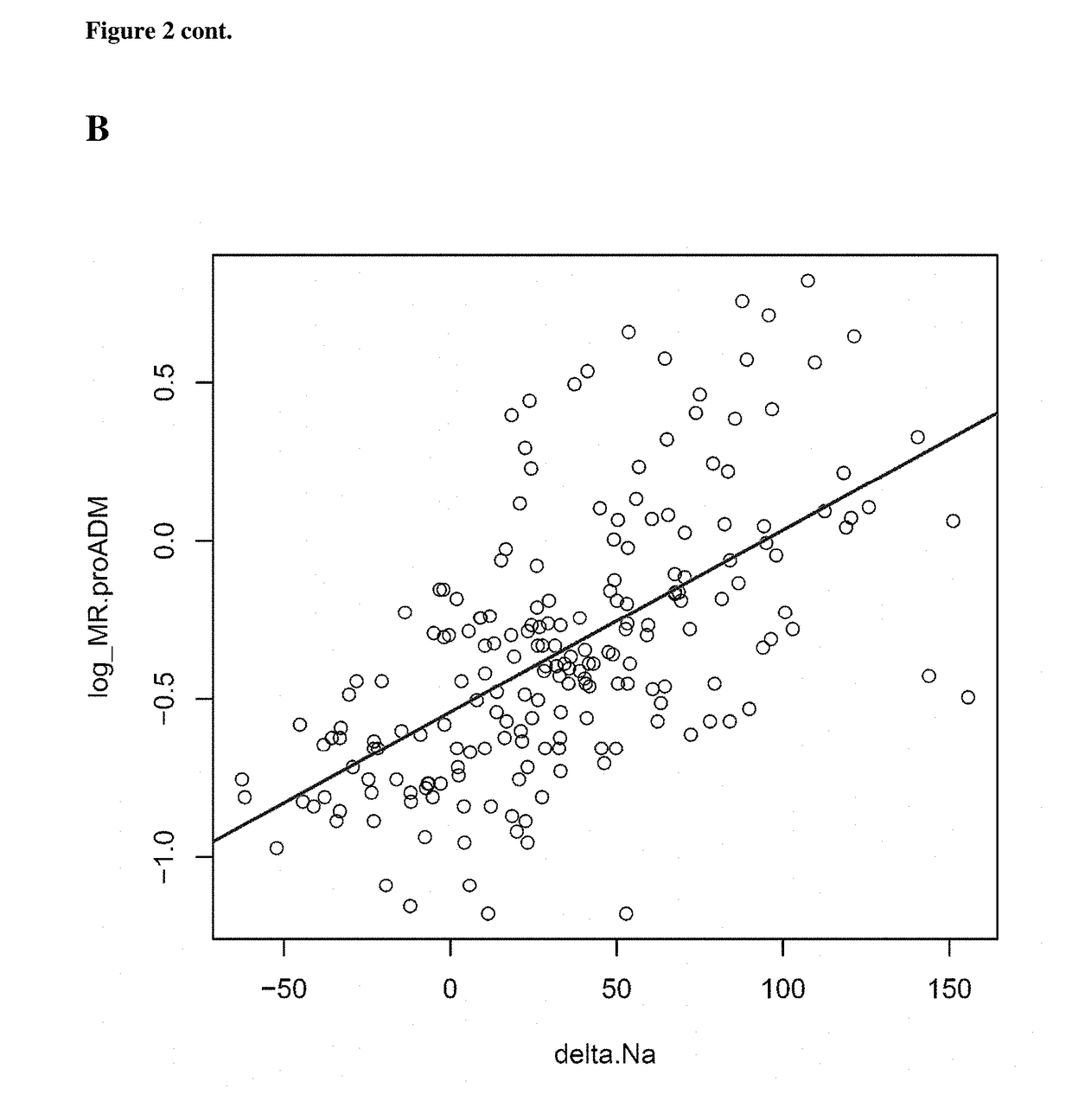MR-proADM as marker for the extracellular volume status of a subject
- Summary
- Abstract
- Description
- Claims
- Application Information
AI Technical Summary
Benefits of technology
Problems solved by technology
Method used
Image
Examples
examples 1
Positive Fluid Balance, Blood Volumes and MR pro-ADM in Critically Ill Patients
[0221]Methods
[0222]Patients and Procedures
[0223]This prospective 7-day observational study was conducted from March 2012 to September 2014 in a 30-bed Department of Anaesthesiology and Intensive Care at Bicetre University Hospital in France. The Institutional Review Board of Bicetre hospital approved the study on December 2011 and all patients or their relatives signed an inform consent. Four types of patients were studied: patients with severe brain trauma (SBT), aneurysmal subarachnoid haemorrhage (SAH), severe trauma without head trauma (PT) and post-surgical peritonitis with shock (P). Patients were included if they needed to be mechanically ventilated in D2 (D2) permanently. SBT was defined as a brain trauma with a Glasgow Coma scores of less than 9 (GCS4 mmol / L and the prescription of catecholamine at admission in intensive care.
[0224]The exclusion criteria were age <18 years, pregnancy and chronic ...
example 2
Prediction of the Fluid Balance and / or Salt Balance by MR-proADM
[0270]1. Introduction
[0271]The objectives of this study are to answer the following questions:[0272]Is it possible to predict the variations of Na and H2O using biomarkers and / or other covariates?[0273]Is it possible to predict volume responses using biomarkers and / or other covariates?
[0274]For that purpose, the predictive performance of the supplied biomarkers and covariates using datamining techniques and model selection were assessed.
[0275]2 Material and Methods
[0276]Please note that the following Material and Methods section describes the material and methods used in Examples 2 to 4 which serve only as exemplary embodiments.
[0277]2 Material and Methods
[0278]2.1 Data
[0279]Here follows a description of the variables and datasets used in this report. A 3.5% rate of missing data (54% for max.lactate) was observed, such a value is low. As a consequence, missing data was not really a major issue in this study. For this re...
example 3
Improving the Prediction by Including Further Parameters
[0324]The objective of the present study is to build clinically exploitable predictors using a selection of covariates (further markers or parameters) (see Table 7).
TABLE 7Markers and parameters used.PrimaryMR.proADM; bmi.J0 (BMI at day 0); weight.J0 (weigthat D 0); Fluid.J0 (liquid intake at D 0); age; sexSecondaryPro.Endo (pro-endothelin-1); CT.proAVP; Na.J0 (sodiumintake at day 0); Adre (adrenalin); IGS.II Pro.ANPFC (heart rate); max.temp (maximal temperature);min.PAM (minimal of the mid arterial pressure);max.lactate (lactate) max.cath (catecholamine);Prot.J0 (total serum protein at day 0); Prot (total serumprotein); Hb; weight
[0325]1.1 Fluid Balance and Sodium Balance
[0326]Reference model for predicting delta.H2O:
delta.H2O ˜MR.proADM+bmi.D0+weight.D0+age+sex+Hb+Prot+IGS.II+Fluid.D0
[0327]where IGS.II and Fluid.D0 both are optional due to the practical difficulty to obtain them in the clinical context.
TABLE 8Summary of delta...
PUM
 Login to View More
Login to View More Abstract
Description
Claims
Application Information
 Login to View More
Login to View More - R&D
- Intellectual Property
- Life Sciences
- Materials
- Tech Scout
- Unparalleled Data Quality
- Higher Quality Content
- 60% Fewer Hallucinations
Browse by: Latest US Patents, China's latest patents, Technical Efficacy Thesaurus, Application Domain, Technology Topic, Popular Technical Reports.
© 2025 PatSnap. All rights reserved.Legal|Privacy policy|Modern Slavery Act Transparency Statement|Sitemap|About US| Contact US: help@patsnap.com



